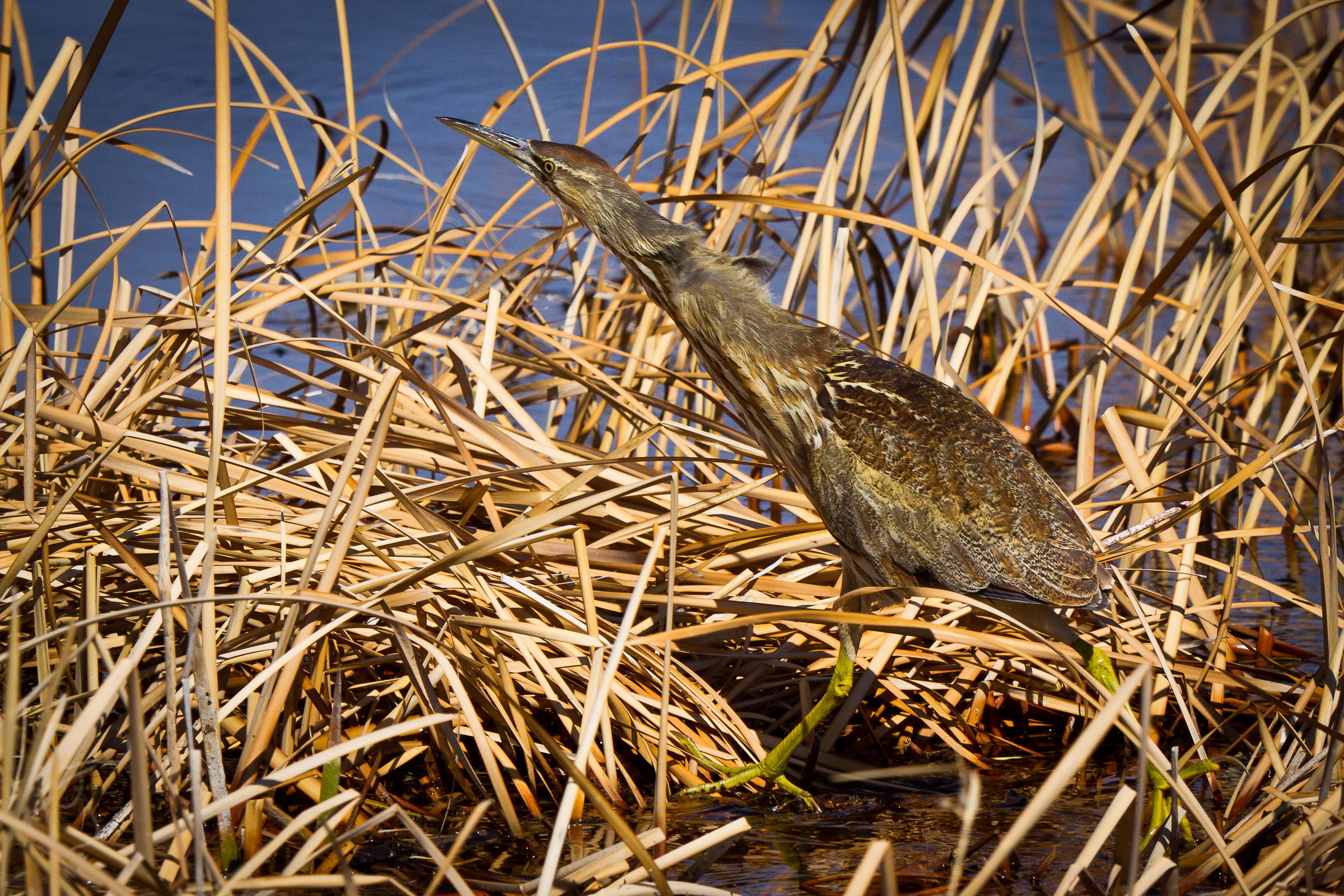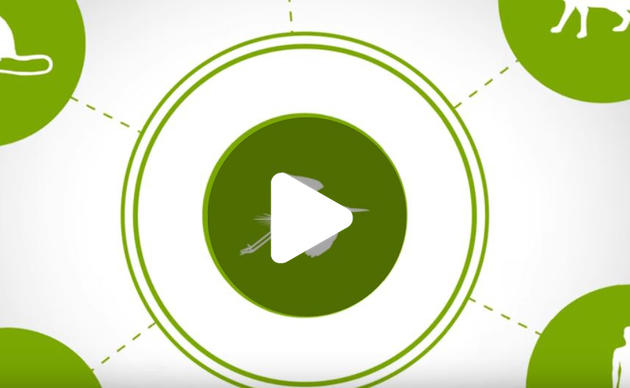The untrained eye may not see the neutral-colored, elongated neck poking out with beak pointed skywards. American Bitterns have brown and white striping that helps them hide in plain sight, and they are known to sway slightly – mimicking the movement of the reeds and grasses in the wind. When this bittern moves from one fishing spot to another, it crawls low and weaves its slender neck and body in between the tall blades of grass.
American Bitterns are a medium-sized bird and are known for their call, which sounds as though a giant faucet has been left leaking. Depending on who you ask, the call sounds like “booming,” “pumping,” or “plunging.” These birds, as well as many other marshbirds, rely heavily on good water quality and healthy marshes that make ideal nesting habitat and feeding grounds.
The American Bittern is a migratory marshbird in great need of conservation attention due to a number of threats, including the loss of wetlands and shallow marsh. Kristin Hall, Audubon Minnesota’s conservation manager, says these birds help us gain a better understanding of how our wetlands are doing.
“Marshbirds are key indicators of wetland ecosystem health,” says Hall. “Because marshbirds rely heavily on specific wetland characteristics and feed high on the food chain, knowing where these birds are nesting and foraging will tell us a lot about the quality of the wetlands in our state.”
People benefit from the management of wetlands for target bird species as well. When we protect and restore freshwater bird habitat, we enable Minnesota’s wetlands to perform their important function of filtering and cleaning our surface water. However, in order to prioritize wetland management in Minnesota, Hall says biologists need to know more about the American Bittern and other marshbirds’ abundance, distribution, population trends, and habitat relationships in order to determine habitat management needs.
Marshbirds are not well sampled by typical comprehensive bird surveys, such as the Breeding Bird Survey, due to their effective camouflage, secretive nature, and hard-to-access habitat. A new statewide survey has provided that information.
Audubon Minnesota has recently finished a targeted marshbird survey, using a national protocol to elicit responses from these birds. The overall goal of the Minnesota Marshbird Survey was to create an ongoing, long-term marshbird monitoring program for our state. This will provide natural resource managers the information they need to manage effectively for these secretive birds and their wetland habitats.
Many other states throughout the Midwest started conducting marshbird surveys in 2011, and now Minnesota is joining in the effort to provide a more comprehensive dataset for the region. The marshbird survey team, including a number of volunteers, surveyed wetlands all across Minnesota. They monitored more than 600 sites in 2016 and also in 2017.
“Science is the foundation of our conservation efforts,” says Hall. “Wetlands are constantly under assault due to habitat change and invasive aquatic plants. Without data to show where birds are and how they are using these wetland habitats, it can be very difficult for us to know what they need to thrive and how we can help.”





